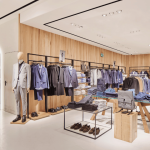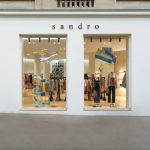In the rarefied world of luxury fashion, where price tags often flirt with excess, Louis Vuitton’s latest creation has raised eyebrows and set tongues wagging. Enter the Millionaire Speedy, a yellow-hued handbag that found its debut gracing the arm of Pharrell Williams, the brand’s newly anointed artistic director of menswear. However, what has captivated attention isn’t just its luminescent design but the staggering one million-dollar price tag that accompanies it, positioning it somewhere between aspirational and the stratospheric ridiculous.
The ostentatious accessory, more reminiscent perhaps of a portfolio typically associated with the likes of Philipp Plein, features clunky yellow gold hardware and a logo clasp – its flamboyant pièce de résistance – adorned with diamonds. Crafted from what is said to be the finest crocodile leather, each bag is made to order.
The Millionaire Speedy is not merely a fashion statement, it is a proclamation of excess and wealth. An Instagram screenshot was first revealed by NBA star PJ Tucker, which shows the bag is available in four colourways, yellow crocodile, marron, blue, green, and red.
In a world where luxury often equates to exclusivity and opulence, the notion of a million-dollar handbag may seem like the epitome of high-end fashion. However, beyond the shimmering facade there exists a growing sentiment that such exorbitant price tags not only border on the absurd but also exude an air of tackiness rather than genuine aspiration.
The essence of luxury has traditionally been intertwined with rarity, craftsmanship, and a sense of exclusivity that transcends the ordinary. Yet, a handbag boasting a million-dollar price tag strays from this ethos, entering a realm where ostentation overshadows elegance.
Disconnect from craftsmanship
A handbag’s value is often associated with the artistry and craftsmanship invested in its creation. However, when the price skyrockets to a million dollars, the focus shifts from intricate detailing to the sheer cost of materials and brand prestige. This disconnect from the art of crafting luxury accessories undermines the very foundation of what makes a bag truly aspirational.
Unwarranted pricing
While luxury items are expected to command a higher price due to superior materials and craftsmanship, there comes a point where the price no longer aligns with the intrinsic value of the item. This unwarranted price inflation contributes to the perception of tackiness, as it appears to be more about flaunting wealth than appreciating genuine luxury.
Modern consumers, especially younger generations, are increasingly prioritising authenticity, sustainability, and meaningful experiences over conspicuous consumption. Expensive handbags, seen as a symbol of excess and unnecessary extravagance, clashes with these evolving consumer values. As aspirations shift towards more purposeful spending, such ostentatious displays of wealth become less appealing.
A handbag’s primary purpose is functionality, serving as a practical accessory for everyday life. However, the hyper-inflated price of a million-dollar handbag renders it impractical for daily use, unless it came with its own body guard. This lack of functionality further reinforces the perception that the item exists solely for show.



